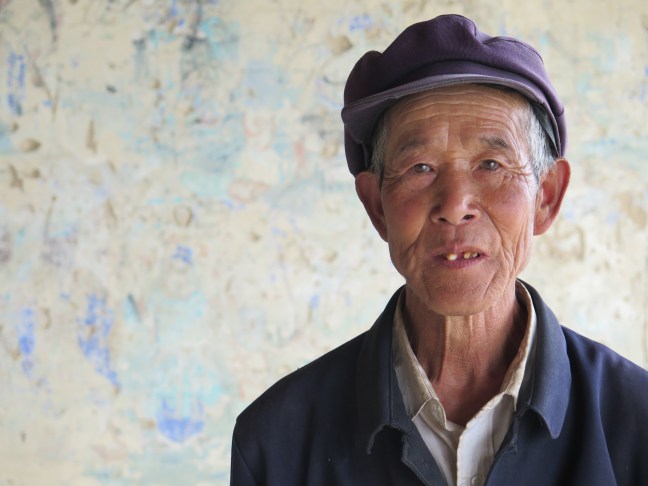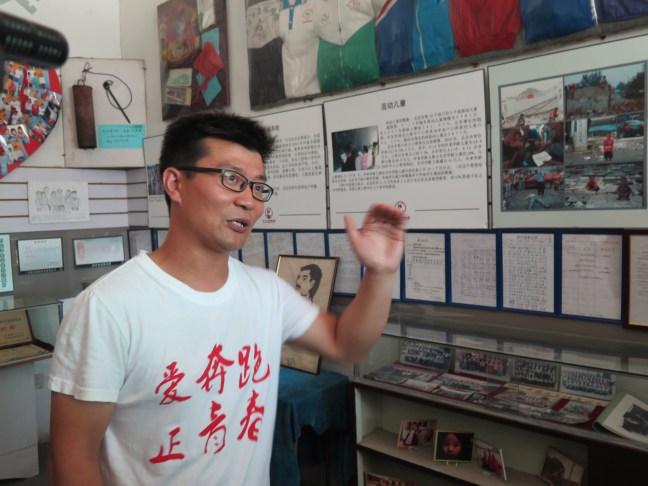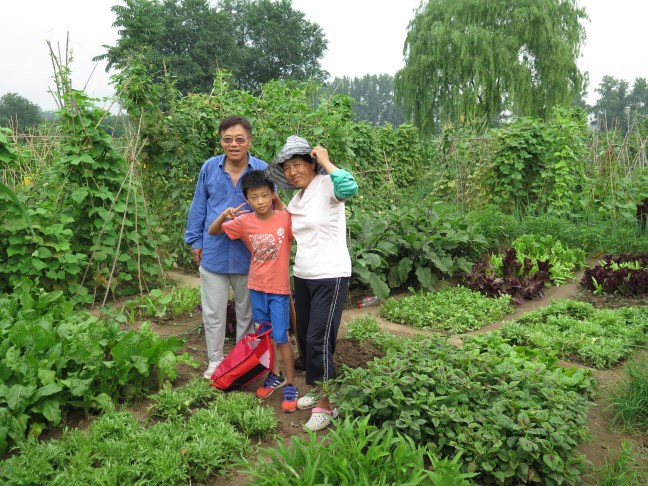
Like academic superfriends each of my colleagues from Union College brings their special talent to bear in China. Have a question about the projections outside a subway car window, grey birds in the park, scientific formulae written across a pedestrian bridge or even the chemical composition of Febreze? There is always a professor ready with the answer.
Armed with white notebooks and black ballpoints we take our seats in a small, humid classroom in Beijing’s Minzu University, a school known for ethnic minority students. Before us parades an array of superhero lecturers: A lawyer suing polluters, an activist documenting incinerator fly ash, a queer filmmaker with stories of Chinese gay rights, a tall American Phd. candidate who has mastered Tuvan throat singing. After their talks a minibus carts us from restaurants (Manchurian, Mongolian, Tibetan, Uighur) to site visits. We go from Friends of Nature, an environmental NGO where staff sport animal names (Tibetan Antelope received us) to a migrant workers’ outreach and support center, where wrenching tales of poor health, industrial accidents and suicide plaster the walls of a makeshift museum.
The broad scope of our study tour – social Justice and sustainability – affords a big picture view of the state of contemporary China. With 1.3 billion souls, a monster economy and 56 official ethnic groups, understanding China is no small task. The monolithic and homogenous metrics employed by Westerners to size up China fail to account for the diversity of culture, thought and practice. The vitriol of a Donald Trump ignores China as a land of people who breathe, eat and bleed.
“They jumped because they believed their lives had no value.” Liang Lu, coal miner turned folk singer, points to a picture of a body in mid air. Liang walks us though the Migrant Worker’s Cultural Center on the outskirts of Beijing. He speaks about Foxconn, an industrial park employing hundreds of thousands of workers, where 14 young people committed suicide by jumping from upper stories. These tragedies recall the Gilded Age’s labor abuses. Many in China works long hours, often with few days off. Workers at Foxconn sleep in company dorms and shop the company store. The center we are visiting is a small ray of hope for a few migrant families in Beijing. They run a school, thrift store and are pleased to speak about the concerts they have been giving.

“I don’t tell my family where I am going.” Li Wen tells us of her work monitoring garbage incinerators. Large cities like Chengdu in Sichuan (14 million people) burns 100% of its garbage, pumping huge amounts of dioxin into the air. Bottom ash left after incineration is often dumped in farm land. Hong Kong’s dystopic-named Everbright International trumpets on its website, “The Safeguard of Environmental and Social Responsibility.” As a huge polluter in China, their claim is absurd. Everbright recently received a $2.4 billion loan to construct more incinerators. Li Wen said she has never been harassed, but is mindful of the potential dangers of poking around these plants. We all feel she is incredibly brave.
While these tales may appear woefully dark, one of the recurring blessings of our study tour is that all is not lost in China. Altering deep systemic arrangements appears a big part of the solution. For example, China has had strong environmental laws on the books since 1979. But most enforcement power was left in the hands of local officials who often see environmental laws as enemies of growth and wealth. The central party, recognizing the need for change, recently elevated the Minister of Environment to a cabinet position and put in place a new system that will hold local officials accountable for pollution.
Back at Friends of Nature, Tibetan Antelope runs us through current environment litigation in China. The organization’s strategy is to find friendly courts and run precedent setting cases through them. So far, Tibetan Antelope beams, they’ve had no losses. Our group applauds in relief. Maybe there is hope.
We drive out beyond the edge of Beijing. The temperature is cooler and the sky not so hazy. Down a long drive we arrive at the Little Donkey Farm, an organic farm that rents plots community garden style to Beijingers. The farm spans many acres and the tightly knit plots all seem very well maintained. The founder explains plastic is not allowed on the ground and they weave baskets for carrying vegetables from roadside irises. Beyond the edge of the farm encroaching smokestacks and apartment blocks are visible.

The advance of development is certainly fierce in China. But with organizations like the Little Donkey Farm and the Friends of Nature and with systemic changes in the government there seems to be a peaceful feeling that while there is much work to be done, change is underway.
Our adventure will soon continue with a trip to coal mine, a 1,600 year old Buddhist grotto and a hike to a remote corner of the Great Wall. Stay tuned.

Steadily informative-humane, helpful. Thank you, Jim.
LikeLike
This is fascinating. I look forward to talking to all of you to learn more.
LikeLike